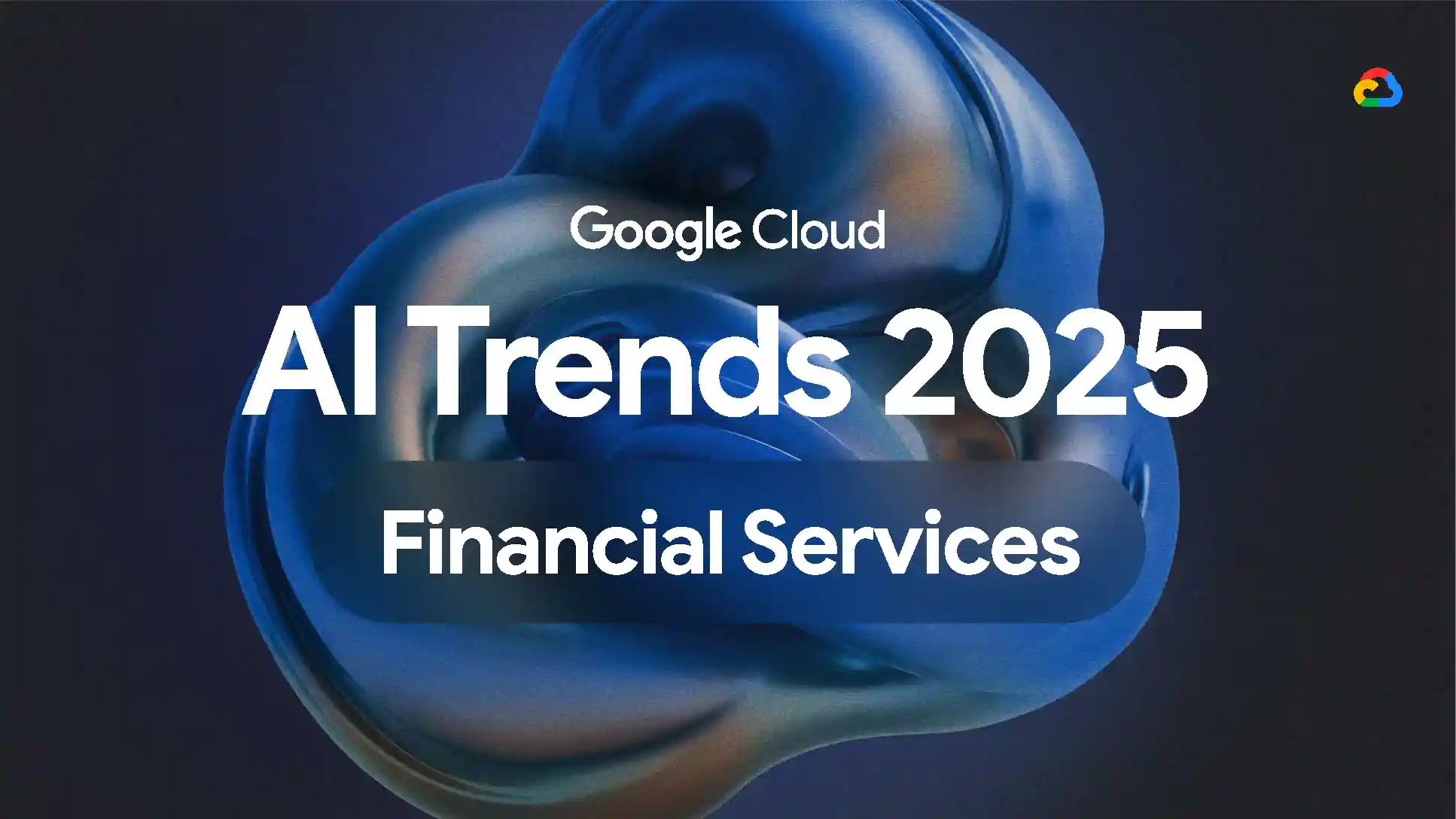The Model Context Protocol (MCP) is more than just a new API standard, it represents a shift in how artificial intelligence systems interact with their operational environments. Introduced in late 2024 by Anthropic and gaining traction among AI-native platforms, MCP addresses one of the most persistent challenges in AI: delivering contextually intelligent, actionable, and reproducible responses from Large Language Models (LLMs) by connecting them with dynamic, real-time external systems.
For Sakura Sky and enterprise cloud architects, MCP offers not just another framework to evaluate, but a foundational building block for the next generation of AI-native architectures.
This blog aims to unpack MCP from its architectural fundamentals and operational workflows to its complex GCP deployments and security implications. We’ll also explore how MCP integrates with and augments Google Cloud’s AI services, such as Vertex AI, Cloud Run, and the RAG stack.
I. The Model Context Protocol: Fundamentals and Contextual Purpose
What is MCP and Why It Matters
The Model Context Protocol (MCP) is a communication framework that standardizes how LLMs interact with external tools and data sources. Inspired by the plug-and-play universality of USB, MCP offers an abstraction for connecting models with disparate operational environments using a consistent schema. At its core, MCP formalizes how “context” is supplied, interpreted, and utilized in AI systems.
MCP leverages a client-host-server model, with JSON-RPC as its transport. This model ensures:
- Secure, session-based communication between components.
- Dynamic tool discovery and invocation by AI agents.
- Decoupling of context sources from inference logic.
While not yet a fully ratified global standard, MCP’s design and early implementations signal a strong future trajectory for standardizing AI integrations across platforms and verticals.
Context Management Limitations in Traditional LLMs
Modern LLMs excel at generating language from static knowledge but struggle when confronted with the fluid, real-time nature of operational systems. Their default interaction pattern is passive—constrained to token limits, lacking access to live state, and generally isolated from the external tools that could make them practically useful in enterprise settings. Bridging this gap between static intelligence and dynamic environments is critical for unlocking the full potential of AI systems. MCP was designed precisely to address these gaps, by enabling structured, discoverable, and state-aware interaction between LLMs and the diverse tooling ecosystem in which they operate.
To understand MCP’s importance, it’s crucial to examine the limitations it addresses:
- Finite Context Windows: Even high-end LLMs max out at tens of thousands of tokens. Important data often falls outside this window.
- Isolated Intelligence: Models cannot natively interact with external systems, requiring brittle, manual integrations.
- Complex Integration Architectures: Enterprise deployments often involve custom pipelines, proprietary APIs, and case-specific glue code.
- No Unified Interface for Actions: Tools invoked by LLMs are inconsistently modeled, leading to unpredictable behaviors and increased overhead.
MCP re-architects these problems into a system that explicitly delineates primitives—Tools, Resources, and Prompts—with a uniform invocation and security model.
II. Core Architectural Constructs of MCP
At the heart of the Model Context Protocol lies a deliberate architectural separation between intelligence (the LLM), coordination (the Host), and integration (the Servers). This separation enables modularity, security, and reusability in complex AI systems. MCP formalizes this design using a clearly defined client-host-server communication pattern layered over JSON-RPC. It abstracts external capabilities—whether APIs, file systems, or application state—into discrete, discoverable primitives that LLMs can reason about and act upon.
Before diving into deployment, it’s essential to understand the architectural underpinnings of MCP. This section explores the core design of the protocol and the roles of its primary components. We’ll unpack the Client-Host-Server pattern, describe the primitives it introduces, and explain how they enable secure, dynamic, and contextual AI operations across varied systems. By grasping these constructs, architects can better appreciate how MCP fits into scalable cloud-native applications.
The Client-Host-Server Triad
The foundational topology of MCP relies on three interacting components—Host, Client, and Server—each with a sharply delineated role in the orchestration of context and functionality. This triad encapsulates the design philosophy of separation of concerns: the Host governs user sessions and enforces policy, the Client maintains a stateful link between the model and the external world, and the Server formalizes access to external data or operations as structured capabilities. These layers together create a controlled, observable pathway for interaction, forming the essential substrate for secure, flexible, and modular AI-native applications.
The MCP architecture is composed of three distinct but interdependent components:
- Host Process: The application managing one or more client instances. It enforces permissions, merges context, integrates with LLMs, and coordinates server connections.
- Client Instance: Represents a session- or task-scoped interaction. It establishes 1:1 connections with specific MCP servers and negotiates capabilities.
- MCP Server: Exposes external functionality as MCP primitives, encapsulating access to APIs, databases, or custom business logic.
Each interaction within MCP occurs over JSON-RPC with clearly defined method semantics and payload structures. The client discovers what a server offers (e.g., available tools), invokes them securely, and integrates responses into ongoing model inference cycles.
Primitives: Tools, Resources, Prompts
MCP interactions are driven by three distinct types of primitives that formalize how external functionality and contextual information are exposed to and consumed by AI models. Each primitive is governed by a different control pattern—user-directed, application-driven, or model-initiated—allowing for fine-grained governance and predictable behavior. These primitives are the primary abstraction through which an MCP server communicates its capabilities to clients. Understanding them is essential for designing systems that are both powerful and safe, enabling language models to reason across diverse operational contexts, trigger dynamic actions, and respond with high relevance and accuracy.
- Tools: Executable functions (e.g.,
create_event,get_logs). These are chosen and executed by the LLM at runtime. They define input/output schemas and expose structured metadata. - Resources: Contextual payloads (e.g., the current working document, a Git commit log) provided by the host or server to inform model behavior. These are streamed or polled.
- Prompts: Reusable command templates triggered by users (e.g.,
/summarize,/translate). They encapsulate common workflows and can contain variable bindings.
This separation of concerns gives fine-grained control over who or what controls each part of the AI interaction.
III. Operational Semantics: From Invocation to Execution
Understanding how MCP operates in real-time is critical to successfully building and debugging context-aware AI systems. This section provides a detailed walkthrough of the lifecycle of an MCP-based interaction, from session initialization to tool invocation and response handling. We’ll also explore the layered security model that governs each step, ensuring that context-sensitive operations remain secure, auditable, and reliable.
Lifecycle of an MCP Interaction
At runtime, MCP interactions follow a structured, predictable sequence that governs how an AI agent receives input, augments its knowledge, invokes actions, and delivers results. This lifecycle involves coordination between multiple components—the Host, Client instances, and MCP Servers—and is designed to ensure that context is gathered securely and actions are performed reliably. Understanding each phase of this lifecycle is essential for debugging, extending, and scaling MCP-based systems.
- Initialization: The host boots up, initializes client modules, and loads available MCP server endpoints.
- Capability Negotiation: Each client connects to its respective server and discovers primitives via introspection.
- User Input Received: A user issues a query or command through the host interface (e.g., chatbot, IDE, terminal).
- Context Augmentation: The host determines required resources and fetches them via MCP server APIs.
- Model Reasoning: The LLM receives the augmented context and input, then decides whether to: Respond immediately, Invoke one or more Tools, Trigger a Prompt.
- Tool Invocation: The client sends a structured request to the relevant server. The server executes the action and returns a result.
- Final Response: The host aggregates all outputs and delivers a composed reply to the user.
This process may iterate multiple times, with stateful context carried across each cycle.
Security Model
The security architecture of MCP is designed to be both distributed and centrally governed, reflecting the zero-trust and multi-tenant patterns common in modern cloud-native systems. Each component in the MCP architecture—Host, Client, and Server—plays a distinct role in enforcing data protection, access control, and operational integrity. Together, they ensure that context and tool invocations remain scoped, authorized, and auditable across all interactions. Understanding how these responsibilities are partitioned and enforced is key to deploying MCP in compliance-sensitive or production-grade environments.
- Host-Level Policies: Define what tools/resources are exposed to which users or models.
- Client Isolation: Prevent cross-session leakage or interference.
- Server Compliance: Enforce data validation, authorization, and access rules.
This distributed but centralized security model mirrors enterprise-grade service mesh design.
IV. Deploying MCP on Google Cloud: Infrastructure, Tooling, and Patterns
Google Cloud Platform (GCP) offers an ideal ecosystem for implementing MCP due to its rich suite of AI, orchestration, and security services. In this section, we bridge theory with practice by mapping MCP components to specific GCP tools and services. We also present a real-world use case to illustrate how an MCP-powered assistant can be composed from modular microservices. By understanding this mapping, teams can accelerate the deployment of robust, AI-native architectures.
Mapping MCP to GCP Services
To operationalize MCP on Google Cloud, it’s essential to translate its abstract components—Host, Client, and Server—into concrete services that can be deployed, monitored, and scaled. Each layer in the MCP stack corresponds to a distinct class of GCP services that provide the compute, storage, networking, and AI infrastructure needed to support context-aware AI systems. This mapping forms the foundation of any MCP implementation strategy on GCP, aligning protocol-level primitives with cloud-native building blocks like Cloud Run, Vertex AI, and IAM.
|---------------|------------------------------------------|-------------------------------------------| | MCP Layer | GCP Service | Role | |---------------|------------------------------------------|-------------------------------------------| | Host | Cloud Run / GKE + Vertex AI | Main orchestration, model interface | | Client | Embedded modules in Host (Cloud Run) | Session-managed connectors | | Server | Cloud Functions / Cloud Run / GKE | Tool/Resource/Prompt exposure | | Backend Data | BigQuery, Cloud SQL, Vertex AI Vector DB | Data and knowledge base | | Caching | Vertex AI Context Caching | Context optimization | | Orchestration | Pub/Sub, Workflows, Pipelines | Eventing and flow management | | Security | IAM, Apigee, Secret Manager | Policy enforcement and perimeter security | |---------------|------------------------------------------|-------------------------------------------|
This architecture supports a microservices-aligned approach to building AI-native systems.
Real-World Use Case: Enterprise Productivity Copilot
Imagine an AI assistant that:
- Queries Jira tickets via REST
- Retrieves customer data from Salesforce
- Summarizes onboarding documents in Google Drive
- Books meetings with Google Calendar
- Escalates IT tickets via ServiceNow
Each of these systems is represented as an MCP server. The assistant itself is the Host, powered by Vertex AI and hosted on GKE. Clients are instantiated per user session or task, and IAM policies define access scopes.
Each server exposes schema-compliant Tools and Resources. For instance, the Jira server might expose:
{
"tools": [
{
"name": "get_open_tickets",
"input_schema": { "project": "string" },
"output_schema": { "tickets": ["object"] }
}
]
}
The Host uses Vertex AI Context Caching to persist summaries and RAG snippets across sessions, significantly reducing token load.
V. Integrating with GCP AI Stack: RAG, Search, and Context Caching
While MCP provides the framework for standardized interactions, GCP’s AI services offer powerful utilities for managing context. This section explores how Vertex AI capabilities—like Context Caching, RAG pipelines, and conversational search—can be encapsulated within MCP primitives. We’ll highlight how these tools complement MCP, forming a synergistic architecture where AI agents can dynamically reason, retrieve, and respond using the best tools GCP has to offer.
Vertex AI Context Caching
One of the primary challenges in working with LLMs is managing the volume of context data required to maintain coherence and relevance across sessions. Vertex AI Context Caching addresses this by allowing developers to offload large, static or semi-static blobs of information—such as documents, logs, or knowledge bases—into a managed cache. This capability becomes especially useful within MCP workflows where Resources retrieved from external systems are reused frequently. By caching these Resources, developers can dramatically reduce prompt size and cost while improving model responsiveness.
In context-rich AI applications, repetitive submission of large documents or datasets to LLMs can significantly inflate latency and costs. Vertex AI Context Caching addresses this problem by allowing developers to upload large content blobs once and reuse them across multiple inference cycles. This is particularly useful in MCP environments where document-centric Resources—retrieved via MCP servers—can be large, infrequently changing, and reused across sessions. By caching this context, the host minimizes redundant token usage and accelerates response times.
- Purpose: Store large content blobs for reuse across inference cycles.
- Usage in MCP: Cache retrieved Resources from document MCP servers.
- Benefit: Reduces token bloat and model latency.
Retrieval Augmented Generation (RAG)
RAG is a critical architectural pattern for grounding LLM responses in factual, up-to-date external knowledge. It enhances the reasoning capabilities of language models by pairing them with vector search backends that retrieve semantically relevant content just-in-time. On GCP, RAG is typically implemented using Vertex AI’s embedding APIs and Vector Search. Within an MCP architecture, this retrieval logic can be cleanly abstracted as a Tool—enabling models to call retrieval workflows dynamically based on task needs, without embedding that complexity in the Host itself.
RAG is a foundational design pattern for grounding LLM responses in fresh, external knowledge. It works by embedding documents into a vector store and dynamically retrieving the most semantically relevant snippets to augment a model’s prompt. Within an MCP framework, this logic can be encapsulated as a Tool—making it callable by an LLM just like any other function. This transforms RAG into a modular, composable capability within the AI stack, particularly useful for regulated or knowledge-intensive domains like compliance, law, or finance.
- Pattern: Embed → Store in Vector DB → Retrieve → Generate.
- MCP Synergy: Wrap retrieval logic as a Tool, callable by the LLM.
- Example: A
retrieve_compliance_policyTool fetches top-ranked docs from a Vertex AI Vector Search index.
Vertex AI Search + Conversation
Google’s Vertex AI Search and Conversation platform provides a powerful suite of capabilities for indexing and querying enterprise content using natural language. It supports multi-turn conversations, semantic ranking, and structured data integration, making it an ideal backend for information-centric AI agents. In MCP-based systems, Vertex AI Search can be encapsulated within a Resource server or Prompt-triggered workflow, allowing models to surface relevant documents or answer complex questions without hardcoding retrieval logic into the model prompt.
Vertex AI Search and Conversation extends traditional search with semantic understanding and multi-turn dialogue capabilities. It allows AI systems to index structured and unstructured enterprise content and provide natural-language, conversational access to it. In an MCP-integrated environment, this service can be surfaced as a Resource provider or prompt-augmented interface, enabling agents to retrieve highly relevant data or handle interactive workflows over corporate knowledge. This integration enhances both the depth and fluidity of AI-powered user experiences.
- Capability: Index corporate data and support multi-turn queries.
- Integration: Exposed as an MCP Resource server or augmented Prompt provider.
VI. Security and Observability Best Practices
Deploying an MCP-based architecture in production demands more than functionality—it requires trust, governance, and visibility. Security and observability must be foundational concerns, not afterthoughts. In this section, we’ll outline key practices to safeguard interactions between Hosts, Clients, and Servers. You’ll also learn how to leverage GCP-native tools for identity management, secret handling, telemetry, and auditability, ensuring your AI applications are secure, resilient, and maintainable from day one.
Authentication and Authorization
Robust identity and access management is foundational to securing MCP-based systems—especially when AI agents are empowered to invoke tools or access sensitive data. GCP provides a suite of mechanisms, including Workload Identity Federation and IAM roles, to define and enforce these boundaries. This section outlines the strategies for managing authentication between hosts and servers, as well as fine-grained authorization controls to ensure tools and resources are only accessed under appropriate conditions.
- Use Workload Identity Federation and service accounts for Host ↔ Server trust boundaries.
- Gate Tool and Resource access with scoped IAM roles.
- Employ Apigee for rate limiting, audit logs, and key enforcement.
Secrets and Identity Management
Beyond access policies, managing secrets and credentials securely is essential to maintaining the integrity of MCP interactions. Whether it’s an API key used by a Tool or a session token issued by an identity provider, sensitive information must be stored, accessed, and rotated in a secure and auditable manner. This section describes best practices for leveraging GCP’s Secret Manager and integrating client identity via OAuth or SSO within the broader MCP framework.
- Store API keys, DB passwords in Secret Manager.
- Rotate secrets and audit usage.
- Tie client sessions to OAuth or SSO identities.
Monitoring and Logging
To ensure operational transparency, performance optimization, and proactive incident response, comprehensive observability is a requirement—not a luxury—for MCP deployments. GCP provides a rich observability stack including Cloud Logging, Monitoring, and Security Command Center. This section explores how to instrument MCP Hosts and Servers for end-to-end traceability, error detection, and compliance monitoring, empowering teams to maintain system reliability at scale.
Observability is the backbone of reliability and security in distributed systems, and MCP is no exception. Tracking request lifecycles across the Host, Client, and Server stack helps teams diagnose issues, audit sensitive operations, and optimize performance. GCP provides comprehensive logging, metrics, and anomaly detection capabilities that integrate directly with MCP workflows. This section focuses on how to set up visibility pipelines that span all layers of the MCP architecture.
- Cloud Logging: Trace request chains.
- Cloud Monitoring: Watch latency, error rates.
- Security Command Center: Detect config drift and policy violations.
VII. Lessons from gcp-mcp and Path to Production
To move beyond theoretical models and architectural diagrams, it’s useful to examine practical implementations of MCP in real-world contexts. The eniayomi/gcp-mcp Github repo offers exactly that: a minimal yet functional demonstration of an MCP server designed to interface with Google Cloud Platform APIs using natural language. By integrating with tools like Claude or Cursor IDE, it allows AI assistants to list GCP resources, query billing data, or retrieve logs in a conversational manner.
This git repo serves as a valuable reference for several reasons:
- It shows how a lightweight MCP server can be built using Node.js and local credentials. This helps new adopters understand the baseline structure and request/response format of an MCP interaction.
- It maps natural-language prompts to actionable API calls on GCP, demonstrating how Tools can be safely and intuitively exposed to AI clients.
- It highlights key security and deployment tradeoffs, such as the simplicity of local execution versus the control and auditability needed in production environments.
From this, developers and architects gain a tangible understanding of how to:
- Translate GCP capabilities into MCP-compliant Tools.
- Handle authentication securely via service accounts or federated identity.
- Think critically about boundaries, permissions, and usage scopes when enabling AI-driven cloud management.
Key takeaways include:
- Local Credential Use: Simplifies security in personal environments.
- Serverless Adaptation: Requires secure service account binding and IAM hardening.
- Command Proxies:
run-gcp-codedemonstrates flexibility but must be sandboxed.
However, production deployment of such a server introduces additional concerns, especially in multi-user or enterprise contexts:
- Multi-user IAM: Each client must be scoped to a unique identity with auditable permissions.
- Role-bound Tool scopes: Tools exposed to the model must correspond to narrowly scoped service accounts or resource policies.
- Audit logging and quota enforcement: All usage must be observable, rate-limited, and logged for compliance.
Take the eniayomi/gcp-mcp repo as a launchpad, not a blueprint—for production. It validates core mechanics, inspires adaptation, and illustrates the engineering choices needed to scale from proof of concept to hardened system.
VIII. Future Outlook and Enterprise Adoption
MCP may not yet be universally adopted, but its principles such as dynamic tool use, standardized context access, secure orchestration, are foundational for AI-native application design. As GCP continues evolving its AI toolset (e.g., Agent Builder, multi-system workflows), MCP-style interactions will become more natural.
For Cloud Architects:
- Start experimenting with MCP servers for your most context-heavy integrations.
- Build abstraction layers to wrap Tools and Resources as microservices.
- Use MCP as a reference pattern even if not implemented verbatim.
At Sakura Sky, we see MCP as a natural fit for our work in building agentic, multi-cloud, and security-sensitive AI applications. It bridges the cognitive gap between models and systems and helps enforce the principles of observability, modularity, and security-by-design.
Final Thoughts
Whether MCP becomes the universal connector for AI agents or merely inspires future protocols, its emergence marks a shift towards more composable and transparent AI architectures. For teams working in GCP, it’s a blueprint worth considering.
In future posts, we’ll explore reference implementations, Terraform modules for deployment, and how to integrate MCP with Kubernetes-native service meshes.
Stay tuned, and reach out if you’d like to pilot MCP architecture in your AI environment.








